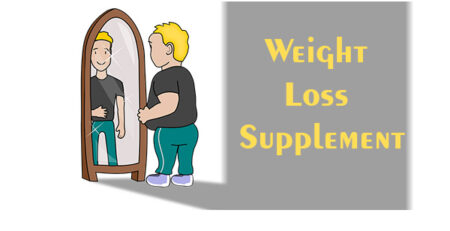Heavy Weight Lifting: A Cult That Needs to Be Understood
In the world of fitness, “heavy weight” training has become more than just a common practice—it has turned into a cult-like belief. Many gym-goers, whether beginners or experienced, assume that lifting heavier weights is the ultimate key to muscle growth. However, this widespread idea often lacks scientific backing and can sometimes lead to more harm than good.
While heavy lifting has its own importance, it is crucial to understand what it actually means, how to do it correctly, and why blindly chasing heavier weights can be counterproductive. This article will dive into the psychology behind heavy lifting, the risks associated with it, and the alternative ways to build muscle effectively.
Why Has Heavy Lifting Become a Cult?
There are several reasons why heavy lifting has gained such immense popularity, despite the lack of substantial scientific evidence supporting its necessity for muscle growth. Let’s explore the main reasons behind this fitness myth.
1. The “Feel-Good” Factor
Lifting heavy weights can create a sense of accomplishment. When you successfully lift a weight that previously seemed impossible, it boosts confidence and provides instant gratification. Many people equate this feeling with real progress, even though true muscle development depends on multiple factors, not just lifting heavier weights.
2. The “Show-Off” Culture
It is no secret that bulky weights attract attention in the gym. For some, lifting heavy becomes a way to showcase strength and impress others. In the process, many individuals compromise on form and posture, increasing their risk of injury. Even when injuries occur, some gym-goers ignore the pain and continue lifting heavier weights, prioritizing external validation over personal safety.
3. Misconceptions About Muscle Stress
One common belief is that muscles grow only when they are exposed to increasing weight. While it is true that progressive overload is essential for muscle growth, it does not always mean lifting heavier. Muscles can be effectively stressed through high repetitions, slower movements, increased volume, and time under tension. Relying solely on heavier weights is a misinterpretation of muscle-building principles.
4. The “Strength Addiction”
Once someone starts lifting heavy, the sense of power and strength becomes addictive. Many lifters chase this “strong feeling,” assuming that heavier weights always translate to better results. However, true strength involves more than just lifting—it includes endurance, flexibility, balance, and overall fitness.
The Risks of Heavy Lifting
Despite its popularity, heavy weightlifting comes with several potential downsides. If not approached correctly, it can lead to serious injuries, joint issues, and long-term health problems. Here are some of the biggest risks associated with lifting heavy:
1. Increased Risk of Injury
Lifting excessive weight without proper form puts immense strain on muscles, tendons, and joints. This can result in:
- Muscle tears
- Ligament damage
- Lower back injuries
- Herniated discs
2. Joint and Cartilage Damage
Over time, lifting too heavy can wear down the cartilage in joints, leading to long-term issues like arthritis. Shoulders, knees, and elbows are particularly vulnerable when subjected to repeated heavy lifting without proper rest.
3. CNS (Central Nervous System) Fatigue
Constantly pushing maximum weights can lead to nervous system burnout. Symptoms include:
- Extreme fatigue
- Loss of motivation
- Reduced strength
- Insomnia and stress
4. Imbalanced Muscle Development
Many heavy lifters focus primarily on compound lifts (e.g., bench press, deadlift, squat) but neglect smaller stabilizing muscles. This can cause muscular imbalances, increasing the risk of injury.
The Right Way to Approach Heavy Lifting
While lifting heavy is not inherently bad, it is important to do it the right way. Here’s how to incorporate heavy lifting safely and effectively:
1. Understand What “Heavy” Means
Heavy lifting does not mean lifting the heaviest weight possible at all times. Instead, “heavy” should be relative to your own strength level and ability to maintain good form.
- If your form is breaking down, the weight is too heavy.
- If you can’t complete the movement in a controlled manner, it’s not productive.
2. Prioritize Form Over Weight
Proper form ensures that you are engaging the right muscles without overloading your joints. If you cannot lift a weight with full range of motion and controlled movement, it is better to reduce the weight and focus on form.
3. Use Progressive Overload Wisely
Instead of just increasing weight, try different methods to progressively overload your muscles:
- Increase repetitions (e.g., going from 8 reps to 12 reps with the same weight)
- Slow down the tempo (increase time under tension)
- Use drop sets or supersets
- Increase range of motion
4. Incorporate Rest & Recovery
Lifting heavy too often without recovery can lead to overtraining and injury. Ensure that you:
- Have at least 48 hours of recovery between heavy sessions
- Incorporate mobility work (stretching, yoga, foam rolling)
- Prioritize sleep and nutrition for muscle recovery
5. Mix Heavy & Light Training
Instead of always going heavy, combine different training styles:
- Strength training (Lower reps, heavier weights)
- Hypertrophy training (Moderate weight, 8-12 reps, higher volume)
- Endurance training (Lighter weights, 12+ reps, controlled movement)
This approach ensures a balanced physique, reduces the risk of injury, and promotes sustainable progress.
Conclusion: Smart Lifting Over Heavy Lifting
Heavy weightlifting is not inherently bad, but it should not be blindly followed as the only way to build muscle. The idea that “more weight = more gains” is misleading and can lead to injuries, muscle imbalances, and long-term joint issues.
A smarter approach is to understand the real meaning of heavy lifting—it is about lifting weights that challenge you while maintaining proper form and control. By incorporating various training methods, prioritizing recovery, and avoiding ego-driven lifting, you can achieve a strong, well-balanced, and injury-free physique.
So, next time you hit the gym, ask yourself: Am I lifting smart, or am I just lifting heavy?











